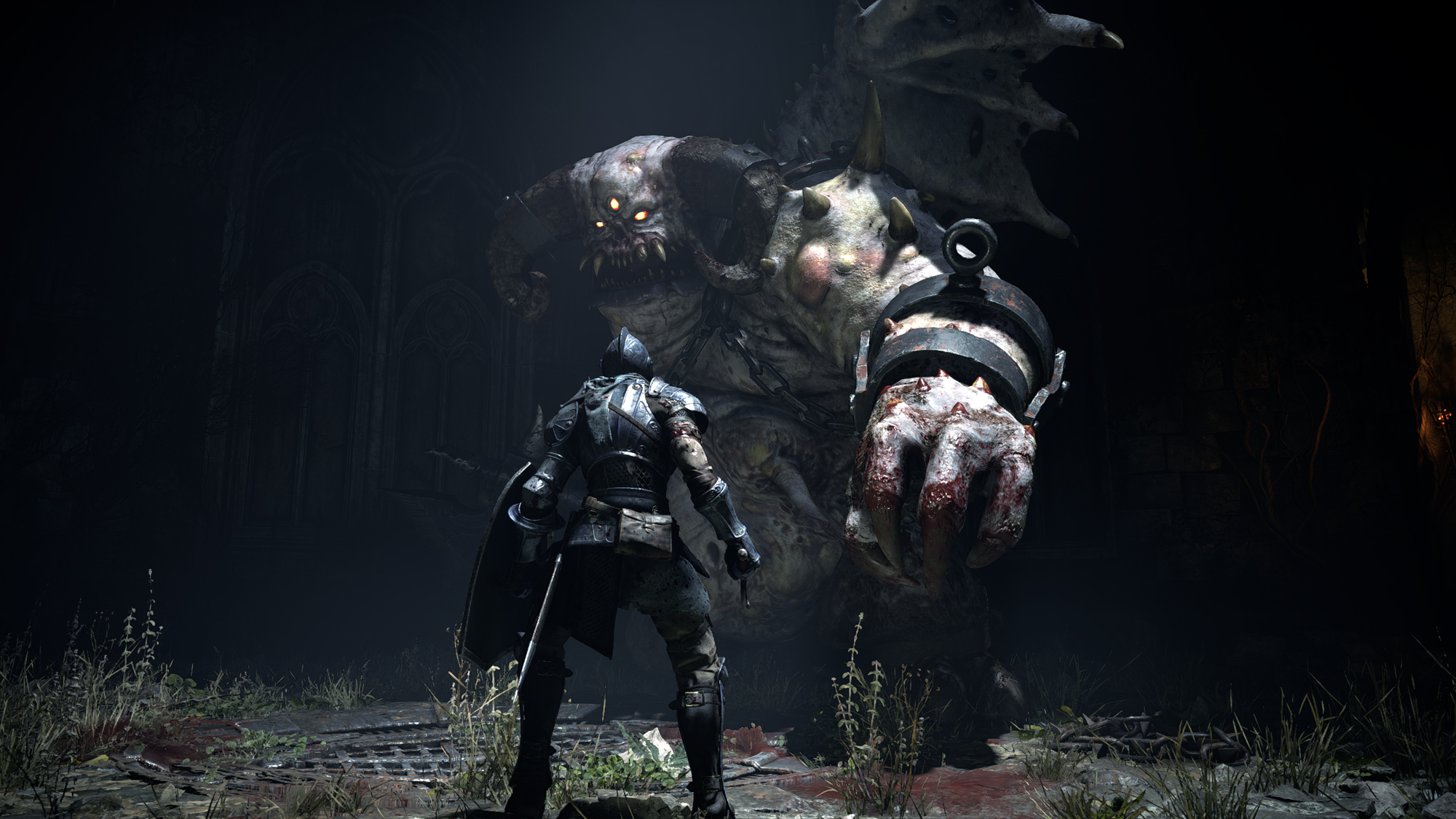I thought the PS5 DualSense controller was a gimmick — until I played this game
Demon's Souls demonstrates just how innovative the PS5 DualSense controller can be

It’s no secret that I don’t love the PS5 DualSense controller. Compared to the beautifully simple Xbox Series X controller, the DualSense has a lot of wasted space, some questionable button placements and a few odd connectivity restrictions. The biggest dealbreaker for me, though, was that I found the innovative haptics more distracting than immersive. Or I did, at least, until I reached the last level of Demon’s Souls.
For those who haven’t played it yet, Demon’s Souls is easily the best game on the PS5, and possibly the best game I’ve played all year. (Granted, it was also one of the best games of the year when it first came out in 2009, but I digress.) Like the PS5’s other exclusive launch titles, Demon’s Souls makes extensive use of the DualSense’s subtle haptic feedback.
But unlike in Spider-Man: Miles Morales, I didn’t find it grating here. While it took a while to grow on me, the DualSense wound up facilitating one of my very favorite parts of the Demon’s Souls Remake.
- PS5 review: The future of console gaming is here
- See our full Xbox Series X review
- Plus: PS5 and Xbox Series X shortages have killed the console war
PS5 DualSense: How it’s different

In case you haven’t tried out the DualSense controller yet (I’m aware that the PS5 is not very easy to find right now), it’s quite different from the DualShock 4. The long grips make it resemble an Xbox controller, while the lightbar is now on the front of the controller, letting you see it during gameplay. The biggest difference, however, is that the DualSense has extremely sensitive haptic feedback.
Rather than just varying degrees of vibration, the DualSense lets you “feel” subtle effects, from different weights on each side of the controller, to resistant triggers when you fire a gun. It’s very difficult to describe until you get your hands on one, but the DualSense can mimic subtle sensations of movement and action; other controllers can mimic only varying degrees of impact.
While the DualSense has generally gotten a lot of praise (including in our own PS5 review), I’ve been a little more reticent about it than most. My gut feeling is that anything that puts distance between you and the action onscreen is more of a gimmick than a gameplay feature. This includes motion controls, touch controls and, yes, even vibrations themselves — although vibrating controllers have been around since the N64 days, so I’ve grown to grudgingly accept them.
In Miles Morales, I didn’t understand why my trigger locked halfway down every time I wanted to fire a web, or why I had to blow into my controller in Astro’s Playroom. The Nintendo DS tried a number of similar things back when it first launched, but generally speaking, the best DS games were the more traditional fare — not the ones that leaned on the console’s odd control scheme.
Get instant access to breaking news, the hottest reviews, great deals and helpful tips.
Granted, if you don’t like the DualSense haptics, you can always just turn them off, but I kept them on, just in case I found a truly justified use-case for them. Demon’s Souls didn’t disappoint.

The Blue Dragon
The next section has minor spoilers for a late-game level in Demon’s Souls, so read on at your own risk.
For most of the game, I found the haptics in Demon’s Souls just as distracting as in Miles Morales. If you play without headphones, you hear a ton of sound effects through your controller, from whooshing arrows to crackling magic spells. Additionally, the controller vibrates differently whether you’re crossing swords with an enemy, traversing a crumbling bridge, winding up a crossbow and so forth. Demon’s Souls is a very tough game, and one that demands your full attention. It’s precisely the kind of situation I mentioned earlier, where haptics — however innovative — can distract you from what’s happening onscreen.
It wasn’t until very late in the game — right before the final boss, in fact — that I realized the DualSense really can accomplish some things that a simple vibrating controller can’t. Late in the game, you have the opportunity to rescue a hardy fighter named Biorr of the Twin Fangs. When the fearsome Blue Dragon blocks the entrance to the final boss chamber, Biorr selflessly runs into the dragon’s path and proclaims that you’ll fight the beast together. It’s a rousing moment in what is often a very bleak game.
Any Demon’s Soul veteran knows that the best way to fight the Blue Dragon is with a bow, so I let Biorr draw the dragon’s fire and ran right underneath the huge beast, where its fire couldn’t reach me. As I drew my bow and unleashed my arrow, I noticed three very subtle things happening simultaneously: Every time the dragon breathed fire, the DualSense’s bottom half would rumble slightly, simulating an earthshaking impact behind me. At the same time, every time I nocked an arrow, the right trigger would lock halfway down, and release when I fired. Finally, the controller’s speaker would play a “whoosh,” followed by a “thud” to let me know that the arrow had landed.
Taking down the Blue Dragon was a time-consuming process, but in the end, the DualSense helped me feel like I was really fighting off a mythical beast rather than simply performing a repetitive, effortless action. If I’m being totally fair, the Blue Dragon fight is not one of the better boss fights in Demon’s Souls, considering that all you do is stand in one place and hit the same button over and over until you win. But the DualSense elevated it into something at least a little exciting.

DualSense outlook
My stance on the DualSense has softened — but only a little. Demon’s Souls is a 30-hour game, and I can cite only about five minutes where the PS5 controller made it considerably better than its PS3 predecessor. But even so, it makes me hopeful that developers can continue to refine the DualSense and find unobtrusive ways to integrate it into the gameplay.
I don’t know if one excellent encounter in one excellent game is enough to change my opinion of the PS5 controller entirely, but I can say that it’s at least a good start. If the DualSense can deliver more magical moments like the Blue Dragon encounter, it might just justify the peripheral’s odd design choices.

Marshall Honorof was a senior editor for Tom's Guide, overseeing the site's coverage of gaming hardware and software. He comes from a science writing background, having studied paleomammalogy, biological anthropology, and the history of science and technology. After hours, you can find him practicing taekwondo or doing deep dives on classic sci-fi.
